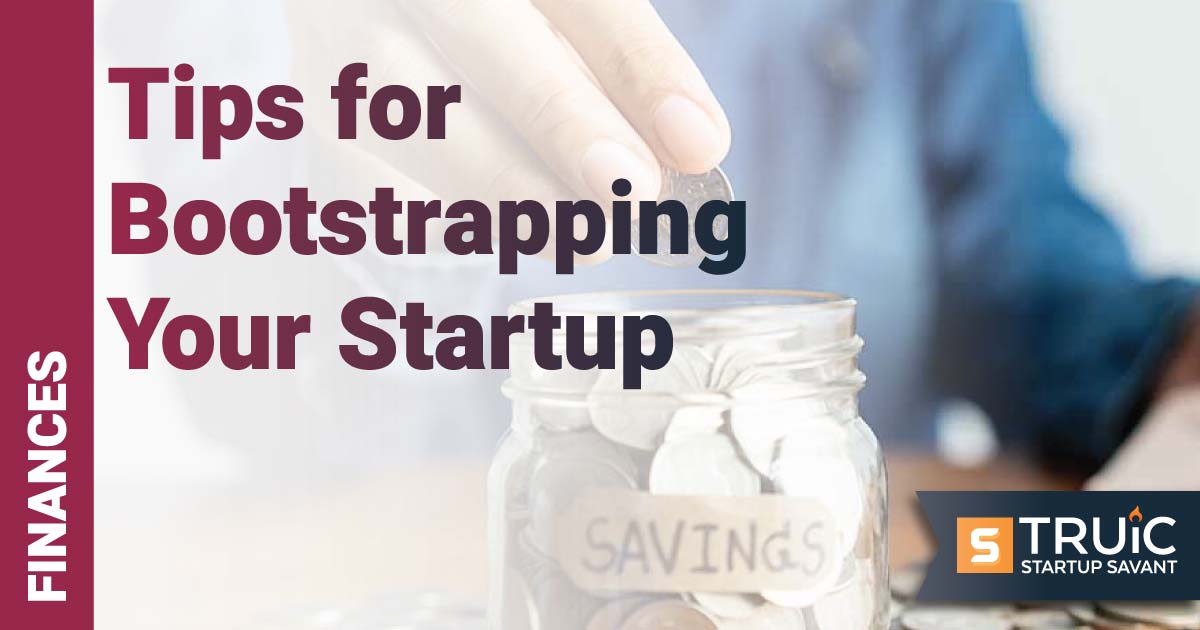It might sound tough but funding a startup yourself is absolutely doable and more common than you think. In the beginning, many startups are funded by their founders and are able to build sustainable startup models without taking out a business loan or other funding source that requires you to release part ownership of your startup. If this sounds like your type of financing source, we’ve got some tips for you to start bootstrapping your way to the startup of your dreams.
Recommended: Learn more about startups or read our full guide on how to start a startup.
Guide to Bootstrapping a Startup
Funding your own startup is absolutely possible as long as you’re dedicated to saving and investing in your goals. The first step is understanding what bootstrapping is as well as the risks and benefits of funding your own startup.
What Is Bootstrapping?
For many entrepreneurs, funding their startup is done by using their own personal savings. This funding method is also known as bootstrapping. Essentially, you invest your own savings or capital instead of funding your startup with outside sources. Once your startup is established, your initial profits are invested back into the company until your startup experiences substantial growth or you receive outside funding.
Pros of Bootstrapping
- Bootstrapping allows you to fund your startup without owing money to a lender; therefore, all profits are put back into the business.
- Since you’re using your own money, you are able to do whatever you want with it — unlike other funding options that have strict requirements as to how the funding is spent.
- All of your profits are able to go back into your company to grow and maintain the startup.
Cons of Bootstrapping
- By utilizing your own personal savings, you absorb all of the monetary risk to launch your startup.
- Saving enough money to bankroll your own startup can take time and requires sacrifices in order to squirrel away enough to fund the business.
- Unless you have a great deal of money saved, your options are limited compared to receiving higher funding over from an outside source.
How to Bootstrap a Startup
So, how do you get started bootstrapping your startup? We have a few ideas. Bootstrapping is more than just bankrolling your startup; there are a few steps you can take to help you save capital and launch your startup. Here is what you need to get started:
Explore Low-Cost Startup Ideas
The first step to bootstrapping your way into launching a startup is to choose a low-cost startup idea that is within your financial abilities. Generally, a low-cost startup idea is known as such because it has low overhead and startup costs. Fortunately, there are many startup ideas that cost very little to get off the ground such as social media consulting and podcasting. Get to know even more options by visiting our guide to low-cost startup ideas.
Start Small
Startups always have room to grow, so if you’re bootstrapping your startup company, starting small is the way to go. This means while you might have high goals for your startup, you can take smaller steps to achieve them. When you’re ready to craft a business plan, you can outline the steps to reach the milestones you have in mind while keeping your initial expenses low.
Pay Off Debt
Before you take on another big expense like bankrolling your own startup, it’s important to identify and pay off any debt that you’ve accumulated. Part of bootstrapping your own business is taking on the financial liability. If you’re already in debt, taking on additional financial responsibility can result in extreme financial hardship. To mitigate risk, try to pay off your debts prior to funding your startup.
Work From Home
Fortunately, working from home has become more common in recent years, so if you’re looking for a way to save money to invest in your startup, this is a great option for you. Not only does working from home save you money on rent and utilities, it also provides you with additional income to invest back into your startup. Additionally, entrepreneurs that work from home can receive tax benefits such as being able to write off internet costs and more.
Calculate Your Estimated Startup Costs
To calculate startup costs, you need to make a list of all of the expenses that you can expect to pay in order to start and operate your business. Startup costs range from office supplies and inventory to formation fees and employment taxes. Generally, startup costs are divided into two categories: fixed costs that are continuous and variable costs that change in amount and frequency. To make it easier, we recommend using our Startup Costs Calculator to calculate your startup costs for free.
Create a Startup Budget
A well-crafted startup budget keeps your money organized and helps you save the capital you need to launch your startup yourself. To start, take the estimated startup costs you have calculated and compare them to your expected revenue. Craft your budget around these numbers and adjust as needed.
Avoid Non-Essential Spending
Once you’ve created your startup budget, it’s important to stick with it, and that includes avoiding non-essential spending. For many, this is one of the hardest parts of bootstrapping because it requires self-restraint. To get started, review your spending habits and identify areas where you’re overspending. For example, swap dining out with preparing meals at home.
Learn New Skills
Don’t waste money outsourcing tasks you can do yourself. There are plenty of free courses and resources for entrepreneurs to learn to do important business tasks without hiring a service. From bookkeeping to web design, there is no limit to the skills that you’re able to learn with some research online or in person.
Use Free or Low-Cost Resources
In addition to business courses, there is a litany of free and low-cost resources available online for startup entrepreneurs. Fortunately, there are resources and tools available to help you with all of your business needs, from starting a startup to designing a logo and even creating a business plan. For more free and low-cost business resources, we recommend this guide to the best small business tools to launch, operate, and grow your business.



